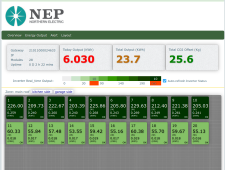agarg
New Member
I have to confess. It is out of the box thinking and innovative. One will have bunch of thick but low voltage dc cables going to readily reachable micros! Cheers!Originally I laid them out but now I just hang them up on a rod.
I have to confess. It is out of the box thinking and innovative. One will have bunch of thick but low voltage dc cables going to readily reachable micros! Cheers!Originally I laid them out but now I just hang them up on a rod.
AFAIK the various MC4-like vendors do not commonly do cross vendor testing internally or as submitted to UL, so this was specifically called out in the relevant update to NEC that mandates either same-brand MC4 OR MC4 listed for cross-brand compatibility.BTW, the Tesla solar roof fires were reportedly not MC4 connector issues as much as non MC-4 connectors made by other firms that are close to MC4 but not exactly a duplicate. I have seen MC-4 clones that sllde togehter but the tangs do not lock. Unfortunately a lot of the details are locked up under confidentiality agreements as part of the litigation.
The MC4 to MC4 clones mating is an interesting topic. Many compatibles like the one from Betteri or from Tlian are top quality. Tlian certified their T4 with MC4 as you can see many places on the web and also here.BTW, the Tesla solar roof fires were reportedly not MC4 connector issues as much as non MC-4 connectors made by other firms that are close to MC4 but not exactly a duplicate. I have seen MC-4 clones that sllde togehter but the tangs do not lock. Unfortunately a lot of the details are locked up under confidentiality agreements as part of the litigation.
Somehow, I thought it was 48v DC.MC or metal conduit needed since Voc > 30V
This is a specific clause for PV DC circuitsSomehow, I thought it was 48v DC.
You are so well informed, chief.This is a specific clause for PV DC circuits
Thanks for this:My understanding of code for ground level micros is:
- panel level RSD needed for system voltage since Voc > 30V even with smallest residential panels
- MC or metal conduit needed since Voc > 30V
- AFCI not needed - Voc < 80V to ground even with monster panels
- GFP - unclear. Microinverter will still shut down but there might be a code carveout for microinverters that you violate. ~40-50Voc and available fault current might not be able to kill you anyway
- Follow manufacturer instructions - unclear. Probably up to AHJ interpretation




